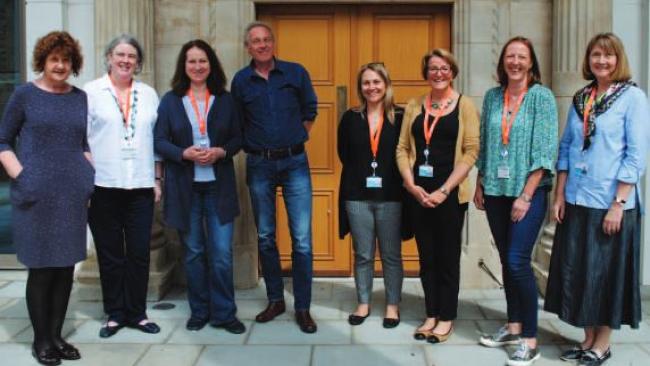
Miraya McCoy
Miraya was an intern at the Intellectual Forum in 2024.
Miraya's research at the IF investigated the 1924 British Empire Exhibition at Wembley.
We spoke to Miraya about her project.
What did you work on during your internship?
I鈥檝e been looking at the 1924 British Empire Exhibition, which was held at Wembley Park 100 years ago. It was what Wembley Stadium was originally constructed for, and it was this huge site. Each colony had its own pavilion, supposedly in the style of that country's architecture. Within the pavilion, there would be all of the produce from that country, basically to try to encourage trade within the Empire after the First World War. But it was also a huge fairground that people would go to and get lost in and wander around. It ran for two years, and apparently half the population of Britain visited it over those two years.
It feels like the type of thing that shaped many of that generation's conceptions of the globe, maybe without that significance being thought about at the time in that way. And I think it was a really interesting point in history, because it was when the Empire was at its peak, but also at the beginning of its decline. So I've been looking at the way that Empire was transitioning into a new phase of globalised capitalism.
What were your methods for researching the Exhibition?
I've been looking in the National Archives, because they have lots of colonial office records. The Brent Council archives also have an eclectic collection of stuff. They have lots of programs and photos that people from the area have donated. I've been sifting through things.
I think one really interesting way of looking at it is by looking at the afterlives of the structures and also of the things, and tracing where everything has ended up. That's been a nice framework for the whole project.
What has stood out to you about what you鈥檝e discovered?
There's so much of it that is really surprising, because it seems like you come across such weird things. One of the big attractions was a statue of the Prince of Wales made in butter. Butter was one of the exports that the Canadian pavilion was pushing, and they tried to bring attention to that by having this huge tank - it looks like an aquarium front - of glass, and then inside is this huge scene carved out of butter.
There are loads of these really odd things. It's kind of uncomfortable because part of it feels really exciting and entrancing, but it's also so deeply sinister. I think the most uncomfortable things are where those two feelings rub up against each other. You'll have one advert for ostrich feathers and luxurious things next to another advert that's a guide for the settler.
Part of what's fun about writing about the Exhibition is communicating to people all of these weird, quite exciting things about it, whilst not wanting that to distract from the structural violence that that was such an inherent part of it. But I think there's definitely a way of showing how those two things are actually two sides of the same coin.
What impact do you hope to have with this work?
I hope to make more people aware of this Exhibition, because I think weirdly few people know it even happened, even though it was so huge. It鈥檚 also quite current with modern debates about who is at home in this country and who belongs here.
Would you recommend getting involved with the IF to other students?
Yes, definitely. I think it has such a diverse program and a sense of curiosity. And it鈥檚 good to be encouraged to get your head up a bit out of your own specific field, rhythm, or routine.
You can meet the rest of the Intellectual Forum team or contact us via email.











